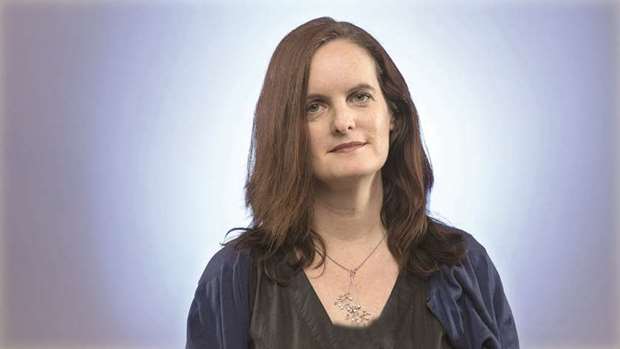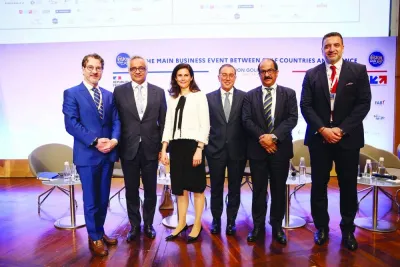In her new book about her career as a television writer, Nell Scovell talks about interviewing for a job during one of her pregnancies. “I went to meet Joss Whedon, creator of Buffy the Vampire Slayer,” she e-mailed a friend shortly after. “He took one look at me and said, ‘Boy, are you fat.’” Scovell laughed. Then the show’s co-executive producer jokingly asked if he should put down a tarp. The postscript: “They didn’t hire me.”
Just the Funny Parts … And a Few Hard Truths About Sneaking into the Hollywood Boys’ Club was in the works long before #MeToo and Time’s Up, but it feels very much of a piece with the stories women have been sharing publicly.
As does another new nonfiction book, Stealing the Show: How Women Are Revolutionizing Television by Joy Press, who was previously the pop culture editor at the LA Times and a TV critic for the Village Voice.
Stealing the Show serves as a kind of guided backstage tour through the careers of key players, from Roseanne Barr (Roseanne) and Diane English (Murphy Brown) through Tina Fey (30 Rock) and Jenji Kohan (Orange Is the New Black).
Both books, out now, offer a compelling and sometimes frustrating glimpse into the behind-the-scenes workings of television.
But each is primarily a story of white women in Hollywood.
Scovell is self-reflective about that — to a point. Her resume is long and impressive, with credits that include Late Night with David Letterman, The Simpsons, NCIS and most notably as the creator and showrunner of the 1990s ABC sitcom Sabrina the Teenage Witch.
On Sabrina, she was finally in a position to make hiring decisions. The writing staff was majority female. It was also entirely white. “I’m aware of all the excuses I could make to justify the homogeneity because they’ve all been made against me on male-centric shows,” she writes. “I had the opportunity to include more voices and I didn’t make enough of an effort. That was a mistake. It would have made the show funnier.”
That extended to the actors she pursued: “The cast was all-white, too. Early in the pilot process, my CAA agents pitched Cicely Tyson for the part of Aunt Zelda. Tyson is a Tony Award and Emmy Award-winning actress and I should have jumped at the suggestion. Instead, I said that we were already zeroing in on Caroline Rhea and it wouldn’t make sense for the two to be sisters. ‘It’s a world of magic. Maybe one sister is black,’ my agent said. It would have been an interesting and bold move, but I didn’t pursue the idea.”
It’s important that she’s being frank. But it’s the kind of anecdote that would benefit from more introspection, because what Scovell is describing is not uncommon; in fact, progress for straight white women in Hollywood rarely translates into progress for anyone else. That’s a problem. (Chicago writer Mikki Kendall has dubbed the phenomenon #SolidarityIsForWhiteWomen.) Which is why it would have been intriguing if Scovell had pushed herself harder to examine why it wasn’t a priority for her at the time.
Stealing the Show, on the other hand, does include a chapter on Mindy Kaling and another on Shonda Rhimes — the latter of whom, Press notes, “points to the lunacy of being congratulated” for building shows around black women and other women of colour and then treating them “as if they were … people.” How else would she treat them?
It’s only in the last few years that we’re seeing more women of colour getting opportunities to create shows, including Issa Rae (Insecure), Ava DuVernay (Queen Sugar) Courtney A. Kemp (Power) and Gloria Calderon Kellett (One Day at a Time). You can understand why Press might have been reluctant to focus on shows that, as she was doing her research, had just one or two seasons under their belt. Still, I would have preferred to hear Press’ analysis of (and interview with) any of the aforementioned women rather than a chapter on Amy Schumer.
Press does acknowledge the elephant in the room when she writes about Lena Dunham and Girls, pointing out that the show’s portrayal of “contemporary New York City was shockingly deficient in racial diversity.” (So was the Washington, D.C.-set Murphy Brown, but that show and others spotlighted in the book get a pass.)
But Press does contrast Dunham’s approach to that of Rhimes.
“Whereas Shondaland shows us what an egalitarian utopia could look like, Lenaland pretty accurately reflects the world its creator inhabits: a milieu riddled with unconscious racism and unacknowledged privilege. But is reflecting this reality good enough? As the debate continued to rage, Girls ongoing preference not to cast actors of colour in major roles began to seem like obstinacy.”
Scovell speaks to this briefly in her own book as well. “Different backgrounds generate different experiences. A (writers) room that shuts out half the population as well as people of colour will have less material to work with.”
Her chapters about her time with David Letterman are fascinating on this topic. Scovell and Merrill Markoe are among the few white women to have worked for Letterman as writers.
“The writers’ room never included a person of colour,” Scovell says of the late-night show (first at NBC and later at CBS). And she calls out Letterman’s executive producer Rob Burnett and other male head writers who “have suggested that women and people of colour just don’t apply for these jobs.”
The real problem, she writes, was the hiring process that “often relied on current (white male) writers recommending their funny (white male) friends to be future (white male) writers. And I knew from personal experience that when women did apply, they were often ignored.”
For the aspiring TV writer, Scovell’s chapter detailing her episode of The Simpsons (Season 2’s One Fish, Two Fish, Blowfish, Blue Fish) includes nuts-and-bolts info: What a story pitch is, how to “break” a story and map it out, what an outline is and the difference between a writer’s draft and a shooting draft.
The book makes clear that past success in Hollywood doesn’t guarantee work in the future, especially as writers age out (which can be as early as 40). Threaded throughout Scovell’s story are multiple verbally demeaning moments. “On my first day as a consulting producer on NCIS, I was walking to my office when I hear a voice boom down the hall. ‘Since when do we have pretty little girls working on this show?’” That voice belonged to showrunner Don Bellisario.
Or the time a fellow writer on another show, upon hearing that Scovell had delivered her children via C-section, stopped the conversation to ask: “Wait — so you’re still tight?” Years later, she says, “this same colleague was accused by 19 co-workers of ‘inappropriate behaviour.’”
Back to Stealing the Show. What makes Press’ collection of essays an especially timely read are the early chapters on Roseanne and Murphy Brown. It’s a chance to brush up on their origin stories now that both are being revived. (Because of the constraints of timing and book publishing, there’s no mention here of either revival. In fact, Press describes Barr as a Ghost of Television Past — which she was, up until the show’s unexpected second life.)
Roseanne and Murphy Brown premiered two weeks apart in 1988 and Press calls them “two of the most brazenly feminist sitcoms ever to grace prime time.”
I think there’s something to that — and it may explain why these two shows in particular are being revived right now. Eileen Heisler wrote for both before going on to create The Middle and she tells Press that what stood out was the “sarcastic, flawed, messy, naughty, not always nice” portrayals of each show’s leading characters. Roseanne 2.0 in particular is turning that “brazenly feminist” brand on its head, with Roseanne herself — the fictional and real-life versions — a stalwart supporter of Trump.
Press also includes a chapter on Transparent creator and Chicago native Jill Soloway, who talks about why women have such a hard time getting their foot in the door: “You can picture the older male director who hires the freshman director. They are both wearing baseball caps, and he’s got his arm around the kid. … Breaking those patterns means dissolving cozy networks.
“That is a pretty big ask for a lot of men who don’t consider themselves racist or sexist but have comfortable systems in place for their professional and personal relationships.”
What both books make clear? This is precisely the moment that Hollywood needs to rethink equality as a “big ask.” — Chicago Tribune/TNS

IMPACTFUL: Joy Press’s Stealing the Show serves as a kind of guided backstage tour through the careers of key players.

